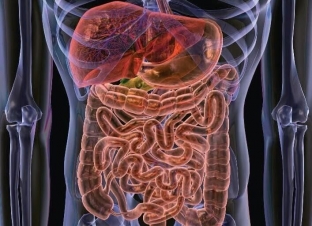It has already been proven that the composition of the intestinal microflora is fundamentally related to the presence or absence of excess weight in a person. There is even a corresponding term – "microbial obesity", which was introduced by the Belgian microbiologist Patrick Kani. And to find out how a piece of the puzzle about the causes of obesity has been deciphered, it will be useful to "look" at into the microscope.
The invisible side of our gut life
Our intestines (more precisely, its final part) are "populated" by a peculiar community of microorganisms, which are ten times more than the cells of the whole organism. And the former carry almost complete genetic information.
The interests of microorganisms must always be remembered, otherwise it can be "expensive"; make do for health. As they say, it’s more harmful to yourself or, more precisely, fatter. It is known that there are beneficial and harmful bacteria. The first get food from foods containing fiber (these are nuts, brown rice, fruits, vegetables, seeds, legumes). Therefore, by providing such bacteria with their favorite food, we give them the opportunity to multiply and not weaken. Otherwise, their place will be "taken" by bad bacteria: fungi, parasites. All discomfort, inflammation – the result of their life activity. Lack of good bacteria leads to "baldness" intestinal epithelial tissue, and through such "holes" Poorly digested food and particles of the vital activity of microorganisms enter the bloodstream. So it turns out that our body "responds" to such an arrival of foreign bodies from the intestines; inflammation.
How does the fullness or harmony of a person depend on the composition of intestinal microorganisms
Inflammation entails, among other symptoms, also the body's resistance to insulin. This hormone, in addition to utilizing sugar, also "helps" store fat deposits. So a person acquires extra pounds and paves the way for prediabetes and diabetes mellitus.
Therefore, it is absolutely logical that the composition of the intestinal microflora of obese and slender people is strikingly different. Not only does an unfriendly microflora dominate in overweight people, it is also monotonous, devoid of "bacterial richness". And it depends on these two factors whether or not to be the above diseases.
Harmful microflora controls the feeling of hunger, affects the rate of absorption of fats, and also "forces" a person to eat sweet and unhealthy refined food.
Numerous experiments show that with a change in the composition of the intestinal microflora and even after an increase in its diversity, a person's weight begins to fall.

Normalization of intestinal microflora – path to health and harmony
If, after various attempts to lose weight with the help of diets or torturing yourself in the gym (or maybe both together), you achieve the desired result, then without normalizing the intestinal microflora, all this will only be a temporary measure.
Knowing the important role played by intestinal microorganisms in provoking obesity, you are unlikely to be impressed by the – "Eat less, exercise more and lose weight". Against the background of this knowledge, various tricks that are offered to us by the beauty and health industry for getting rid of excess weight are also unconvincing – fat burners, dietary supplements, creams, etc.
What needs to be done to restore the diversity of the intestinal microflora and an acceptable weight? First of all, properly nourish the microflora. And no less important is to "sow" good bacteria – probiotics and fermented foods will help.
We will not argue that the only culprit of evil in the occurrence of diabetes and overweight – it is a monotonous or unfriendly composition of the intestinal microflora. But still, it is absolutely impossible to discount this factor, since the role of microflora is much more important than it is commonly thought.








Add a comment